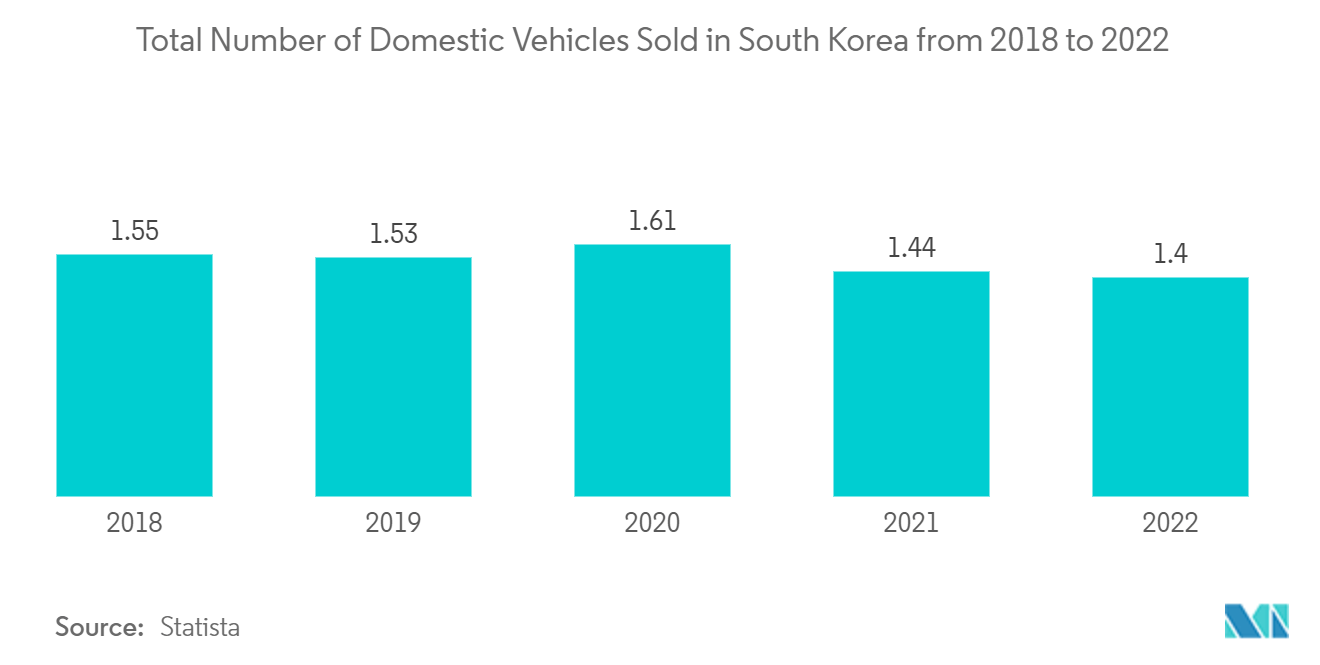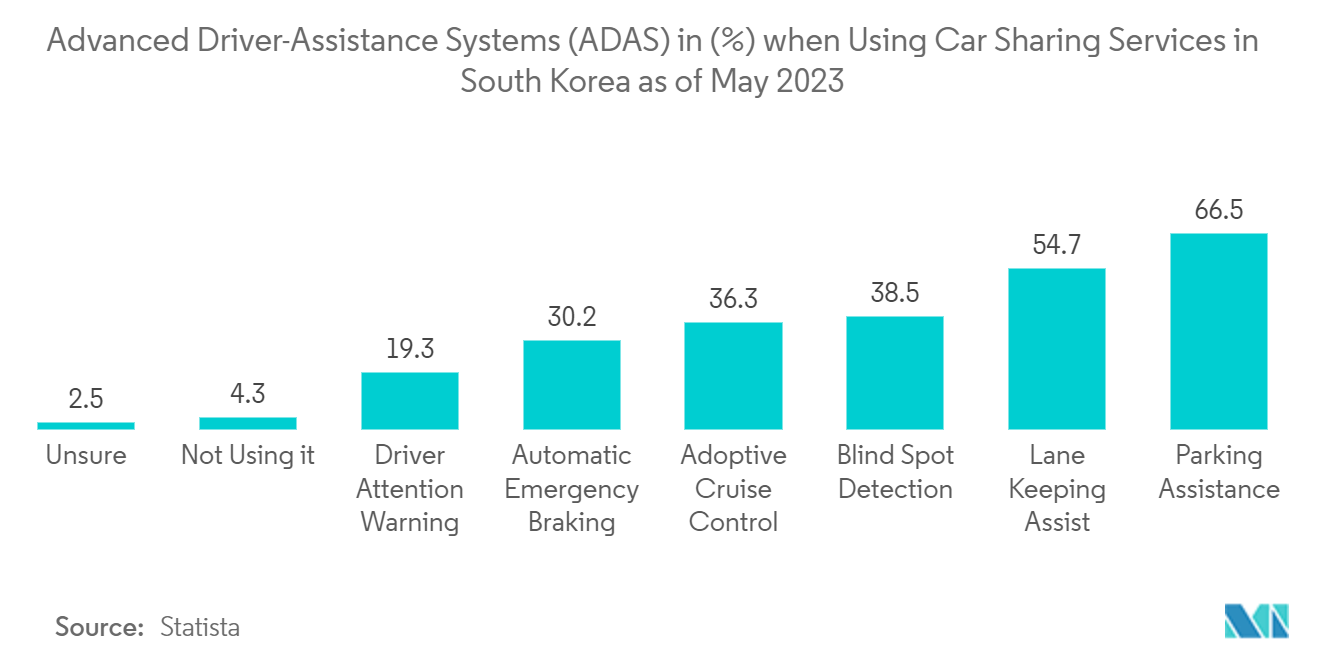Market Trends of South Korea Automotive Camera Industry
Sensing Camera Segment to Witness the Fastest Growth
Systems using remote sensing cameras are gradually becoming an integral part of active safety systems in automotive vehicles. Sensing cameras provide a higher performance level than general-purpose driving cameras while also meeting the same automotive quality standards as more cost-effective solutions. These intelligent safety systems have two key components, namely, remote sensors that use remote sensing technologies and a processing computer.
A remote sensor is a device that collects data about real-world conditions through sensors such as radar, ultrasonic sensors, and cameras. The processing computer receives data from these cameras and sensors, then makes the decision and sends commands to the vehicle subsystems. A few advanced automotive camera companies in the country are introducing different business strategies to enhance their market offerings. For instance, in April 2022, ZF Friedrichshafen acquired a 6% stake in StradVision, a South Korean pioneer in AI-based vision processing technology for autonomous vehicles and ADAS systems.
With the increasing sales of automobile vehicles in South Korea, the demand for cameras has been increasing significantly. For instance, in 2022, around 1.4 million units of vehicles, including passenger cars and commercial vehicles, were sold in South Korea. Owing to the aforementioned factors, the market is expected to grow subsequently over the forecast period.

ADAS Application Segment Expected to Drive the Automotive Camera Market
The demand for automotive cameras is rapidly increasing due to their various applications in different ADAS functions. The country is following a roadmap to adopt level-4 autonomous vehicles by 2027. South Korea has a favorable environment for quick, accurate, and reliable protection through various systems, such as newly updated patent examination guidelines and accelerated exposure for autonomous vehicle inventions.
Furthermore, autonomous vehicle technology relies on sensor and camera technologies to perceive surroundings and navigate without any human intervention. Along with ADAS features, the country’s government and industrial participants are introducing various initiatives and entering into partnerships to produce autonomous vehicles. For instance,
In May 2023, the Korean Intellectual Property Office (KIPO) unveiled compelling findings from a global survey on patent submissions for camera-LiDAR sensor convergence technology. According to KIPO’s assessment, there has been a substantial surge in patent fillings for camera-LiDAR sensor convergence technology, witnessing an impressive average annual growth rate of 33.6% over the last five years.
The South Korean government is currently conducting preliminary feasibility studies for its level 4 self-driving project, which will be underway from 2021 to 2027. It also plans to launch a flying car demonstration project in 2025.
Also, the government will supply at least KRW 2 trillion (USD 1.49 billion) to increase the degree of independence in terms of major materials and parts required for future cars from 50% to 80% while helping train 2,000 researchers and engineers by 2025. Owing to these aforementioned developments, it is anticipated that the automotive camera market in South Korea will continue to grow over the forecast period.


